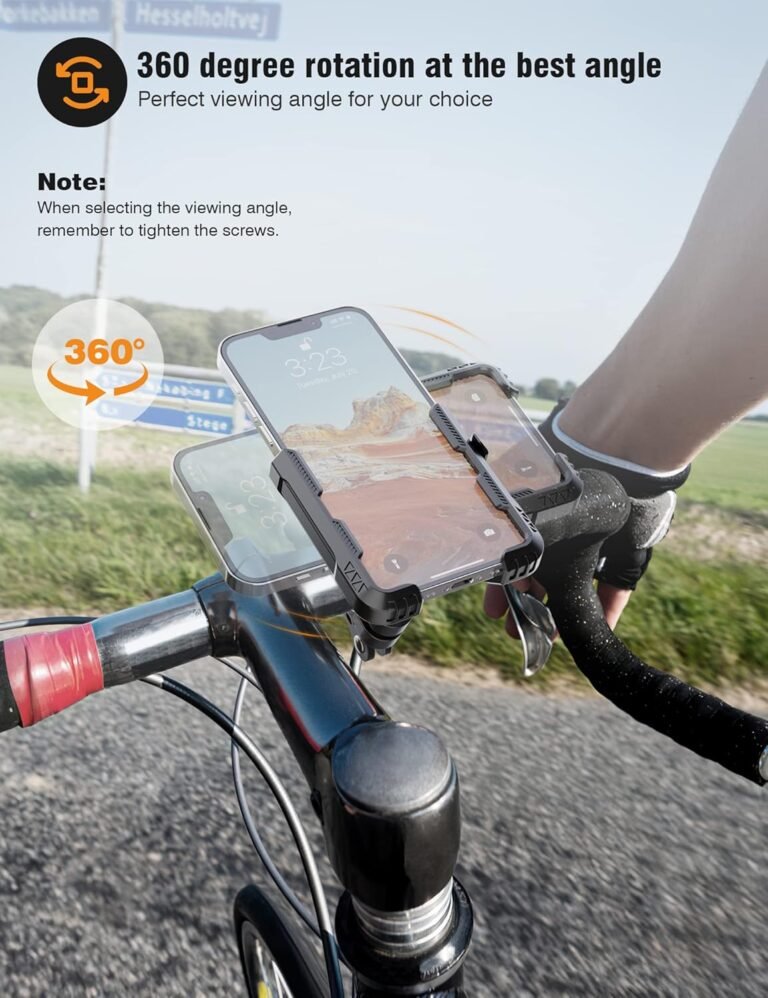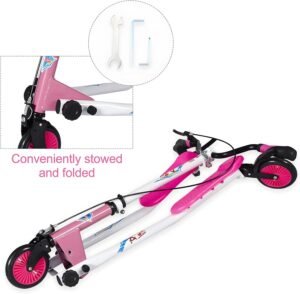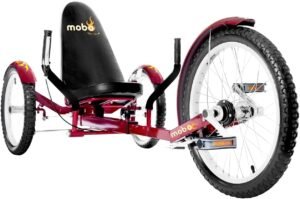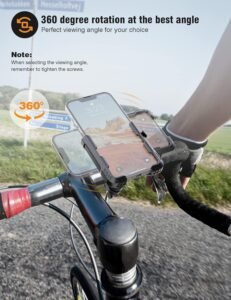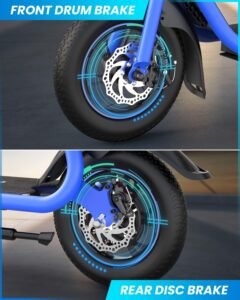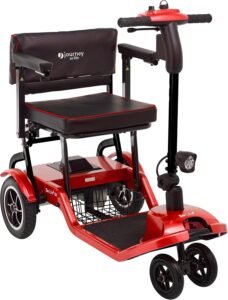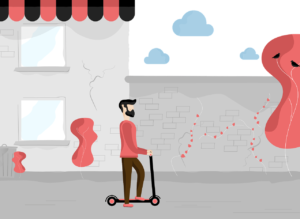
Riding a scooter at night can be an exhilarating experience, the cool breeze on your face, the sense of freedom, and the thrill of exploring the city in a different light. However, it’s important to remember that night riding comes with its own set of challenges and potential dangers. From poor visibility to increased risks of accidents, being prepared and practicing proper safety measures is crucial. In this article, we will explore the importance of night riding safety for scooters and provide some valuable tips to ensure your nighttime adventures are enjoyable and safe. So, gear up, turn on those lights, and let’s ride into the world of nighttime scooter safety!
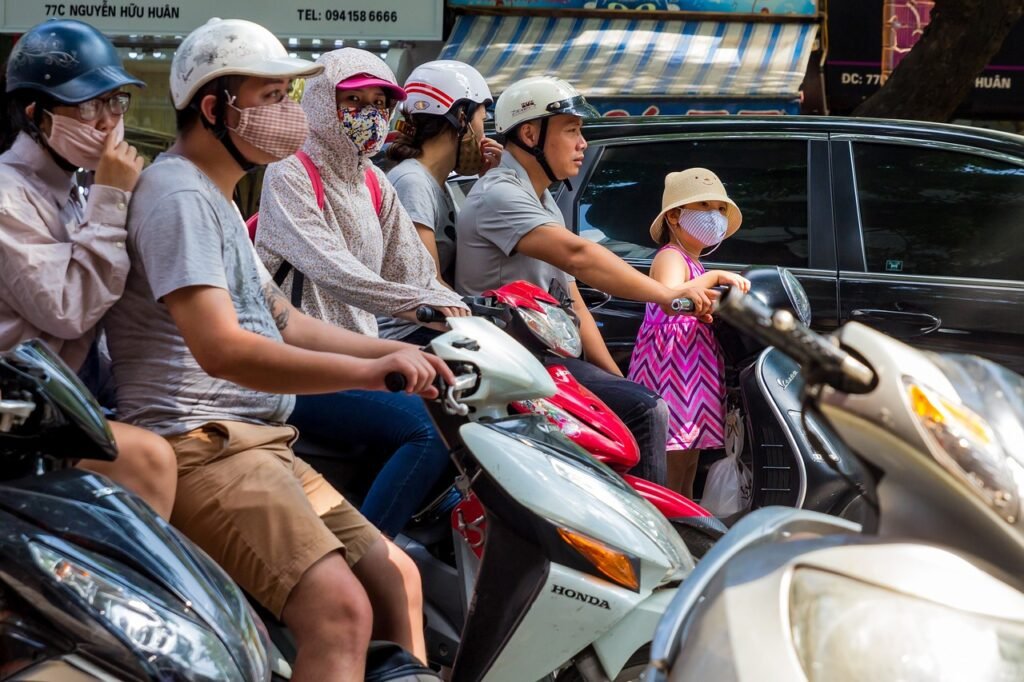
This image is property of pixabay.com.
Check out our product reviews!
Importance of Night Riding Safety
Riding a scooter can be an exhilarating experience, especially at night when the roads are less crowded and the air is cool. However, it is crucial to prioritize safety when riding in the dark. Here are some reasons why night riding safety is of utmost importance for scooter riders:
Increased visibility
One of the primary concerns when riding a scooter at night is visibility. Unlike cars and motorcycles, scooters are often smaller and less noticeable on the road. By implementing proper safety measures and using the right equipment, such as headlights, taillights, and reflective gear, you significantly increase your visibility to other road users. This heightened visibility ensures that drivers, pedestrians, and cyclists can see you from a distance, reducing the risk of accidents.
Reduced risk of accidents
When riding a scooter at night, the risk of accidents can be significantly higher due to reduced visibility. Poorly lit roads, distracted or impaired drivers, and the potential presence of wildlife are just a few of the hazards you may encounter. By adhering to safety protocols, maintaining your scooter, and using appropriate safety equipment, you can mitigate these risks and ensure a safer riding experience.
Enhanced rider confidence
Riding a scooter at night can be intimidating, especially for inexperienced riders. However, by investing in proper safety equipment and following safety guidelines, you can boost your confidence on the road. When you know you are well-prepared for night riding, with proper visibility and precautions, you can enjoy the ride with a higher level of confidence, making the experience more enjoyable and stress-free.
Legal requirements
Lastly, it is crucial to note that many jurisdictions have specific legal requirements for night riding. These regulations typically involve having proper lighting, reflectors, and safety gear in place. By adhering to these legal obligations, you not only ensure your safety but also avoid potential fines and penalties. It is always essential to familiarize yourself with the specific night riding regulations in your area and ensure that your scooter meets all the necessary requirements.
Essential Safety Equipment for Night Riding
When riding a scooter at night, having the right safety equipment can make all the difference in ensuring your visibility and reducing the risk of accidents. Here are some essential safety equipment items to consider:
Headlights
A reliable and bright headlight is a must-have for night riding. The headlight illuminates the road ahead, making it easier for you to see and for other road users to spot you. Ensure your scooter has a properly functioning headlight and aim it correctly so that it provides ample illumination without blinding oncoming traffic.
Taillights
In addition to headlights, taillights play a crucial role in night riding safety. Taillights make your scooter visible from behind, alerting drivers approaching from the rear of your presence. Invest in high-quality taillights that emit a bright and noticeable light, even in challenging conditions.
Reflective gear
Reflective gear is another indispensable safety equipment for night riding. Clothing, vests, and accessories with reflective materials help enhance your visibility by reflecting light from other sources, such as car headlights. Consider wearing reflective clothing that features reflective strips, and opt for accessories like reflective ankle bands or reflective tape for additional visibility.
Helmets with built-in lights
If your local regulations permit, consider using a helmet with built-in lights. These helmets have integrated lights in the front and sometimes at the back, increasing your visibility and ensuring that you are easily seen by other road users. Check the specific regulations in your area before opting for a helmet with built-in lights.
Reflective stickers
To further enhance your visibility, consider applying reflective stickers to your scooter. These stickers can be placed on various parts of your scooter, such as the frame, fenders, or even the wheels. Reflective stickers effectively reflect light and make your scooter more visible to others on the road.
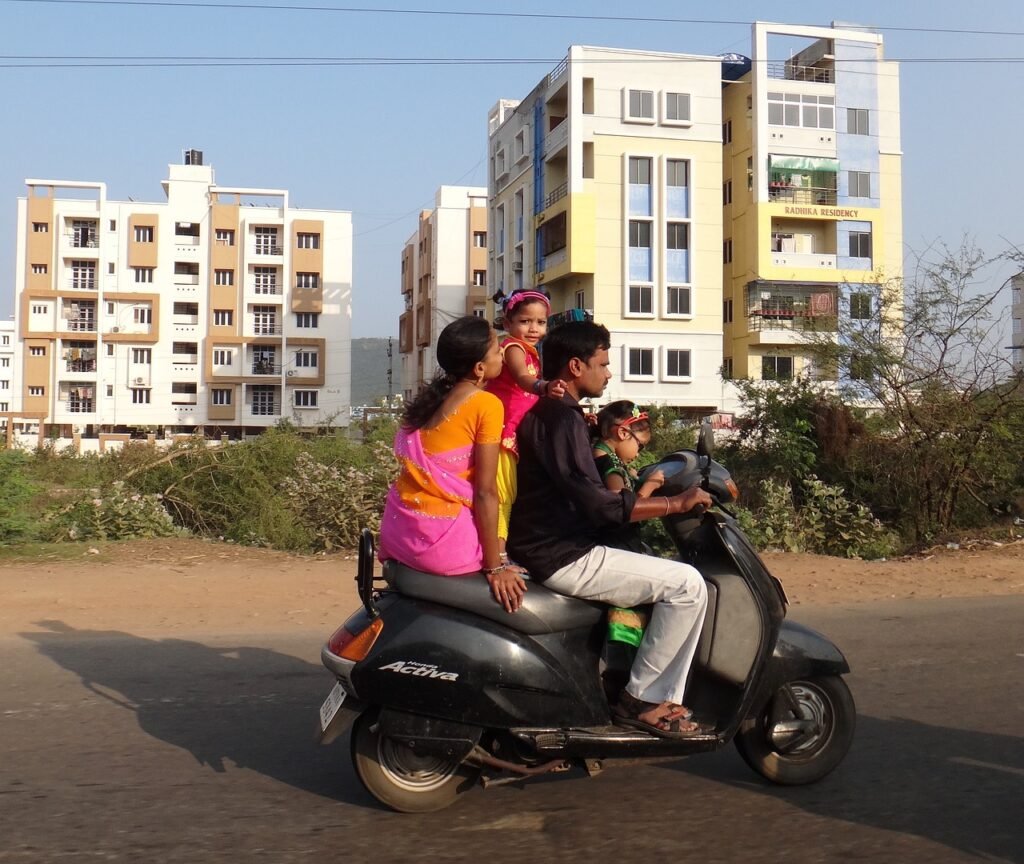
This image is property of pixabay.com.
Check out our product reviews!
Tips for Safe Night Riding
While having the right safety equipment is crucial, practicing safe riding habits is equally important when riding a scooter at night. Here are some valuable tips to ensure your safety on the road:
Plan your route in advance
Before embarking on a night ride, take the time to plan your route in advance. Choose well-lit roads with less traffic whenever possible. Knowing where you are going and what to expect allows you to stay focused on the road and avoid unnecessary risks.
Be visible to other road users
Make it a priority to be visible to other road users, especially at night. Ensure that all your safety equipment is in working order, including your lights and reflective gear. Additionally, choose clothing with bright colors that make you more noticeable. The goal is to stand out and be easily seen by motorists and pedestrians alike.
Use hand signals
Hand signals are an essential communication tool, especially when riding at night. Clearly indicate your intentions by using hand signals for turns, lane changes, and stops. This allows other road users to anticipate your movements and act accordingly, reducing the risk of accidents.
Avoid riding in blind spots
When riding alongside larger vehicles, be mindful of their blind spots. These blind spots are areas where the driver’s visibility is limited. Stay out of these areas to minimize the chances of a collision. Instead, try to position yourself where you are clearly visible to the driver, either slightly ahead or behind.
Stay alert and focused
Night riding can be more mentally taxing due to reduced visibility and potential hazards. Thus, it is crucial to stay alert and focused on the road at all times. Avoid distractions, such as using your phone or listening to loud music, as they can hinder your ability to react to sudden changes on the road.
Obey traffic rules
Adhering to traffic rules is essential for every rider, regardless of the time of day or the type of vehicle you are operating. Follow speed limits, stop at red lights, yield to pedestrians, and practice safe merging and turning. By obeying traffic rules, you contribute to a safer riding environment for everyone.
Maintenance and Inspection
Regular maintenance and inspection of your scooter are crucial for night riding safety. Ensure that your scooter is in optimal condition by following these maintenance and inspection tips:
Check lights regularly
Before every night ride, inspect your scooter’s lights to ensure they are functioning correctly. Test both the headlights and taillights, and replace any bulbs that are dim or burnt out. Ensure that the lights are appropriately aimed to provide optimal visibility without causing glare for other road users.
Ensure battery is charged
A fully charged battery is essential for night riding safety. Regularly check the battery’s charge level and recharge as necessary. If your scooter operates on a removable battery, consider carrying a spare battery with you or invest in additional charging devices for longer rides.
Inspect brakes
Brakes are a critical safety feature for any vehicle. Regularly inspect your scooter’s brakes, checking for wear and tear, proper functionality, and sufficient stopping power. Replace brake pads and other brake components as needed to ensure optimal performance.
Check tire pressure and tread
Proper tire maintenance is crucial for safe night riding. Check the tire pressure regularly to ensure it matches the manufacturer’s recommendations. Additionally, inspect the tire tread for any signs of wear or damage. Worn-out tires or inadequate tread depth can compromise grip and stability, increasing the risk of accidents.
Maintain proper visibility
Clean the windshield and mirrors regularly to ensure optimal visibility. Dirty or fogged-up surfaces can impair your ability to see clearly, especially at night. Use appropriate cleaning products and wipes to keep your windshield and mirrors clean and free from debris.
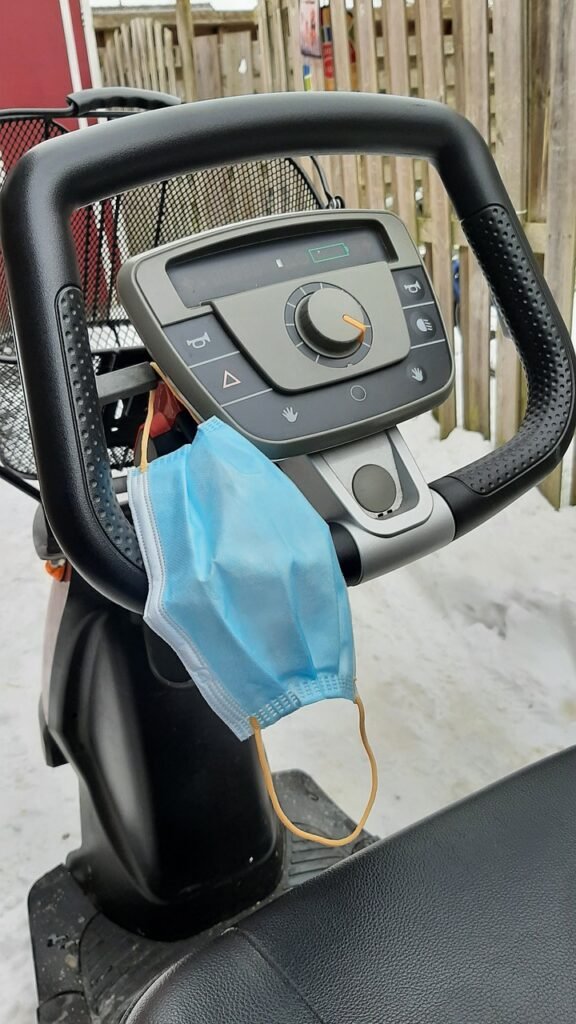
This image is property of pixabay.com.
Rider Training and Education
Acquiring the necessary knowledge and skills through rider training and education is vital for safe night riding. Consider the following tips to improve your riding abilities and increase your awareness of potential risks:
Take a safety course
Enroll in a safety course specifically designed for scooter riders. These courses provide valuable information on road safety, defensive riding techniques, and proper handling of a scooter in different conditions. The practical experience gained during these courses can significantly enhance your riding skills and confidence.
Learn defensive riding techniques
Defensive riding techniques are essential for staying safe on the road, especially at night. Defensive riding involves anticipating potential hazards, maintaining an appropriate following distance, and being prepared to react to sudden changes in traffic. Learn defensive riding techniques and practice them diligently to minimize your risk of accidents.
Be aware of road conditions
Understanding the road conditions you will encounter during your night rides is crucial. Be aware of potential hazards such as potholes, debris, or uneven surfaces, as they can be more challenging to spot in the dark. Adjust your riding style accordingly and always prioritize your safety.
Understand scooter dynamics
Familiarize yourself with the specific dynamics of riding a scooter. Unlike motorcycles or bicycles, scooters have unique characteristics that can affect their handling and stability. Learn how to navigate corners, brake efficiently, and maintain balance to ensure a safe and smooth ride.
Practice emergency maneuvers
Emergencies can happen at any time, and being prepared to handle them is essential. Practice emergency maneuvers such as sudden stops, evasive swerves, or controlled skids in a safe and controlled environment. By honing these skills, you will be better equipped to respond to unexpected situations on the road.
Avoiding Riding Under the Influence
Riding a scooter under the influence of alcohol or drugs significantly impairs your judgment, reaction time, and coordination, increasing the risk of accidents. To stay safe while riding at night, keep the following in mind:
Effects of alcohol and drugs on riding ability
Alcohol and drugs can severely affect your riding ability by impairing your coordination, decision-making, and reaction times. Even a small amount of alcohol or certain medications can impair your judgment and reduce your ability to handle your scooter safely. It is always best to refrain from consuming these substances before riding.
Designated sober driving
If you plan on consuming alcohol or drugs, arrange for a designated sober driver or alternative transportation. Never underestimate the effects of these substances on your riding ability, even if you believe you are “okay to ride”. Make responsible choices to ensure your safety and the safety of others on the road.
Utilize ride-sharing services
Instead of riding your scooter at night after consuming alcohol or drugs, consider utilizing ride-sharing services such as Uber or Lyft. These services provide a convenient and safe alternative, allowing you to enjoy your night out without compromising your safety on the road.
Weather Considerations
Weather conditions can greatly impact the safety of night riding. To ensure your well-being, consider the following tips when riding your scooter in different weather conditions:
Adjust riding behavior for weather conditions
When riding in adverse weather conditions, such as rain, wind, or fog, it is crucial to adjust your riding behavior accordingly. Reduce your speed, increase your following distance, and exercise caution when braking or accelerating. Be aware of the potential hazards presented by the weather and adapt to ensure your safety.
Avoid riding during heavy rain or fog
Heavy rain or fog significantly reduce visibility and make the roads more hazardous. If possible, avoid riding in these conditions altogether. If you must ride, ensure that you have the proper rain gear and utilize your scooter’s lights and reflective gear to maximize your visibility to other road users.
Wear appropriate gear for cold weather
In colder temperatures, dress appropriately to stay warm and comfortable. Wear insulated clothing, gloves, and headgear that covers your ears to protect yourself from wind chill. Cold temperatures can affect your concentration and reaction times, so staying warm is essential for safe riding.
Watch out for slippery surfaces
Wet or icy surfaces can be extremely slippery, making it more challenging to maintain control of your scooter. Avoid riding over puddles or wet leaves and exercise caution when braking or leaning into turns. Be aware of potential slippery surfaces and adjust your riding style accordingly.
Scooter Maintenance Checklist
Maintaining your scooter and performing regular inspections are crucial for your safety and the longevity of your vehicle. Consider the following checklist for routine maintenance:
Inspect overall scooter condition
Regularly inspect your scooter for any signs of damage or wear. Check for loose screws, cracks in the bodywork, or any other issues that may compromise your scooter’s structural integrity. Address any problems promptly to ensure your safety on the road.
Check tire pressure and tread depth
Improper tire pressure and worn-out tire tread can affect your scooter’s handling and grip. Regularly check the tire pressure and inflate or deflate the tires as needed. Additionally, ensure that the tire tread depth meets the manufacturer’s recommendations to maintain optimal traction.
Test brakes and lights
Before each night ride, test your scooter’s brakes and lights to ensure they are functioning correctly. Perform gentle stops to verify that your brakes are responsive. Check that all lights, including the headlights, taillights, and turn signals, are working as intended. Replace any malfunctioning bulbs immediately.
Ensure proper functioning of mirrors
Mirrors are essential for maintaining situational awareness while riding. Regularly adjust your mirrors to provide an optimal field of view, and ensure that the mirror surfaces are clean and free from debris. If any mirrors are damaged or loose, replace or repair them promptly.
Charge and maintain battery
A well-maintained battery is crucial for your scooter’s performance. Regularly charge your battery according to the manufacturer’s instructions, and keep it clean and free from corrosion. If your scooter has a removable battery, consider investing in a battery tender or maintaining a spare battery to avoid potential issues during nighttime rides.
Importance of Rider Visibility
Ensuring your visibility as a scooter rider is essential for your safety on the road, particularly when riding at night. Here are some tips to enhance your visibility:
Wear bright, reflective clothing
Choose clothing that is brightly colored and enhances your visibility to other road users. Opt for neon or fluorescent colors that stand out, even in low-light conditions. Additionally, consider wearing clothing with reflective materials that increase your visibility when illuminated by vehicle headlights.
Use additional reflective accessories
Incorporate additional reflective accessories into your riding gear. Reflective vests, ankle bands, or wristbands can supplement your clothing and provide an extra layer of visibility. These accessories reflect light back to its source, making you more noticeable to other road users.
Avoid black or dark-colored attire
Avoid wearing black or other dark-colored clothing when riding at night. These colors blend in with the darkness and make it harder for other road users to see you. Opt for lighter colors that contrast with the surroundings, improving your visibility on the road.
Install additional lighting on the scooter
Consider installing additional lighting on your scooter to enhance your visibility. LED strips or accessory lights can be mounted on various parts of your scooter, such as the frame or handlebars. These additional lights can attract attention and make you more visible to other road users, minimizing the risk of accidents.
The Risks of Night Riding
While night riding can be an exhilarating experience, it also presents specific risks that every scooter rider should be aware of. Here are some potential risks associated with night riding:
Reduced visibility
The most obvious risk of night riding is reduced visibility. The darkness makes it challenging to see potential hazards on the road, such as potholes, debris, or animals. Reduced visibility also makes it harder for other road users to spot you, increasing the risk of accidents.
Increased potential for accidents
Due to reduced visibility and other factors associated with night riding, such as impaired or distracted drivers, the potential for accidents is higher. It is essential to exercise extra caution, follow safety protocols, and prioritize visibility to reduce the risk of collisions or other accidents.
Distracted or impaired drivers
Nighttime can be a time when drivers are more likely to be distracted or impaired. Inattentive drivers, whether due to phone usage, exhaustion, or other factors, pose an increased risk to scooter riders. Additionally, impaired drivers under the influence of alcohol or drugs can be more prevalent at night. Stay vigilant and be prepared to react to the actions of other road users.
Poorly lit road conditions
Many roads are poorly lit at night, especially in more rural or remote areas. Dim or non-existent street lights can make it difficult to navigate safely. Be prepared for these conditions and use your scooter’s lights and reflective gear to increase your visibility as much as possible.
Higher chance of wildlife encounters
Wildlife, such as deer or raccoons, is more active during the night, increasing the risk of collisions. Animals can suddenly appear in your path, leaving you with little time to react. Stay alert and scan the road ahead for any signs of wildlife, especially when riding in areas known for higher wildlife populations.
In conclusion, prioritizing night riding safety for scooter riders is crucial to ensure a safe and enjoyable experience on the road. By focusing on increased visibility, using essential safety equipment, practicing safe riding habits, maintaining your scooter, and staying informed through rider training and education, you can minimize the risks associated with night riding. Remember to always ride responsibly, be aware of your surroundings, and prioritize your safety and that of others on the road. Happy and safe night riding!






